Mastering Fall Crappie Fishing: Patterns, Best Lures & Locations That Produce
By: Jason Sealock
August 15, 2025
The fall season can produce some of the absolutely best crappie fishing of the whole year. While spring might be what most people believe is prime time crappie fishing, the fall actually finds bigger groups of fish, very well-fed fish because of the abundance of baitfish and insects throughout the summer, and the cooling water temperatures have them overly aggressive and feeding nonstop for the impending winter. And the best part is that fall crappie fishing patterns, lures, and methods have maybe the widest array of options of the whole year.
Taking advantage of fall crappie fishing can yield some of the best catches of the year
The fall season can produce some of the absolutely best crappie fishing of the whole year. While spring might be what most people believe is prime time crappie fishing, the fall actually finds bigger groups of fish, very well-fed fish because of the abundance of baitfish and insects throughout the summer, and the cooling water temperatures have them overly aggressive and feeding nonstop for the impending winter. And the best part is that fall crappie fishing patterns, lures, and methods have maybe the widest array of options of the whole year.
Personally, fall is my absolute favorite time to crappie fish, for a myriad of reasons. First, way less fishing pressure results in a more enjoyable time on the water. Fish typically pack together in their biggest groups of the year in the fall. And while it might take you a bit to find a big group, when you do, you can find consistent fishing for weeks on end. My biggest limits the last few years have actually come in the fall. And my biggest 5-, 7-, and 20-fish limits of crappie were all caught in the fall. So you can see why I am so big on fall crappie fishing.
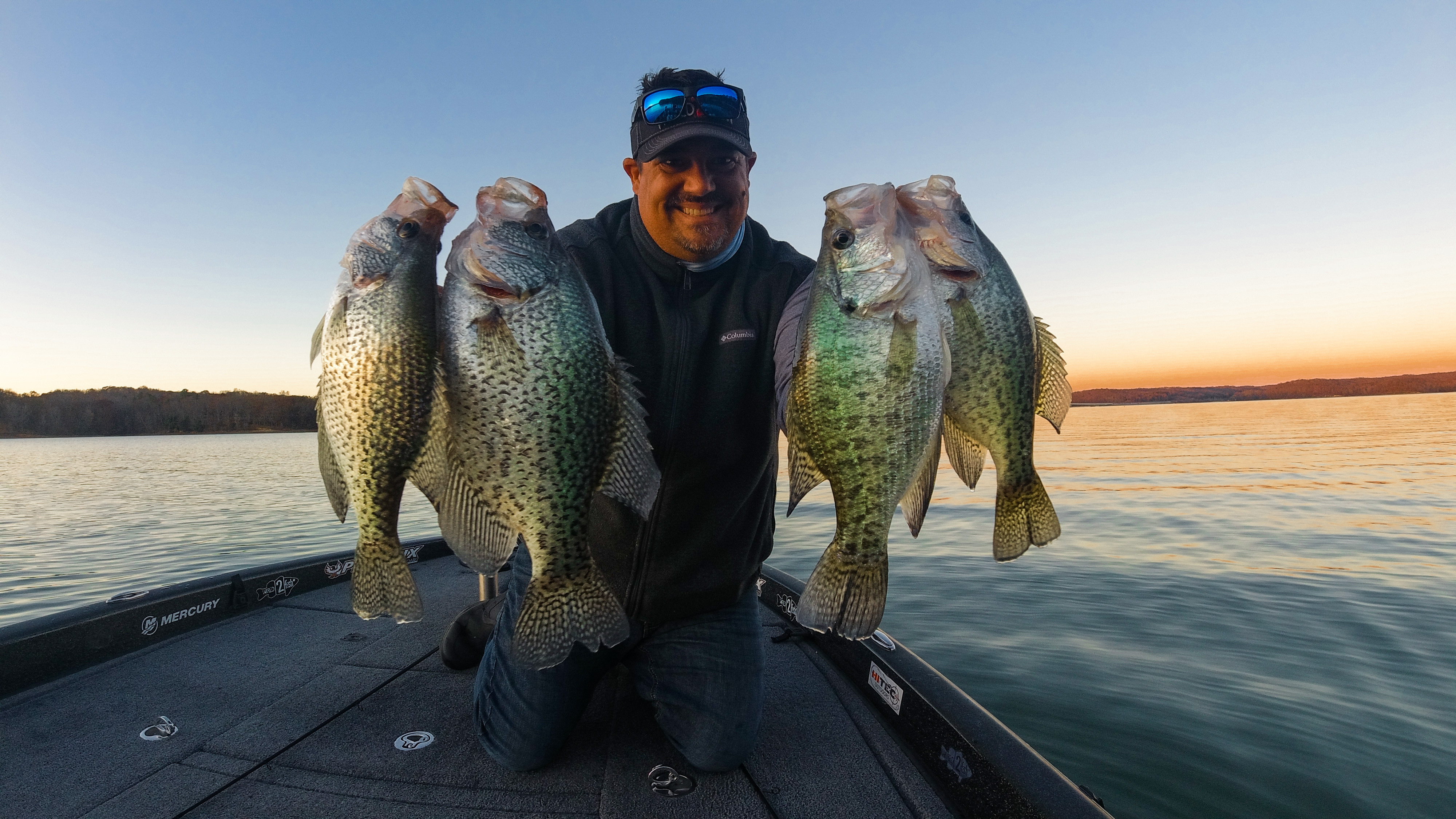
Table of Contents
Fall Crappie Patterns
This time of year, fish will move off the main lake deep summer areas and move back into shallower cover, and also relate to bait a lot more. Following creek channels into and out of creek arms, bays, and larger shallow areas can put you closer to the fish.
Generally speaking, black crappie will tend to school more like other gamefish, like bass and white bass, do, and herd bait a lot more. These schools will follow channels, and you can intercept them in fairly predictable places. White crappie are more cover-oriented and generally speaking are more loners than schoolers. You will find several white crappie in a piece of cover, but I've seen schools of black crappie in the hundreds in the fall.
Typically speaking, as water temperatures cool in the fall, crappie move shallower and bite more aggressively as they feed up heavy before winter. The more of them that group together, the more aggressive they tend to be and the more apt they are to chase your lures.
And normal crappie behavior still applies in that they still like shaded areas. They still prefer to feed more in low-light conditions. So playing that to your advantage can lead to dynamite fishing.
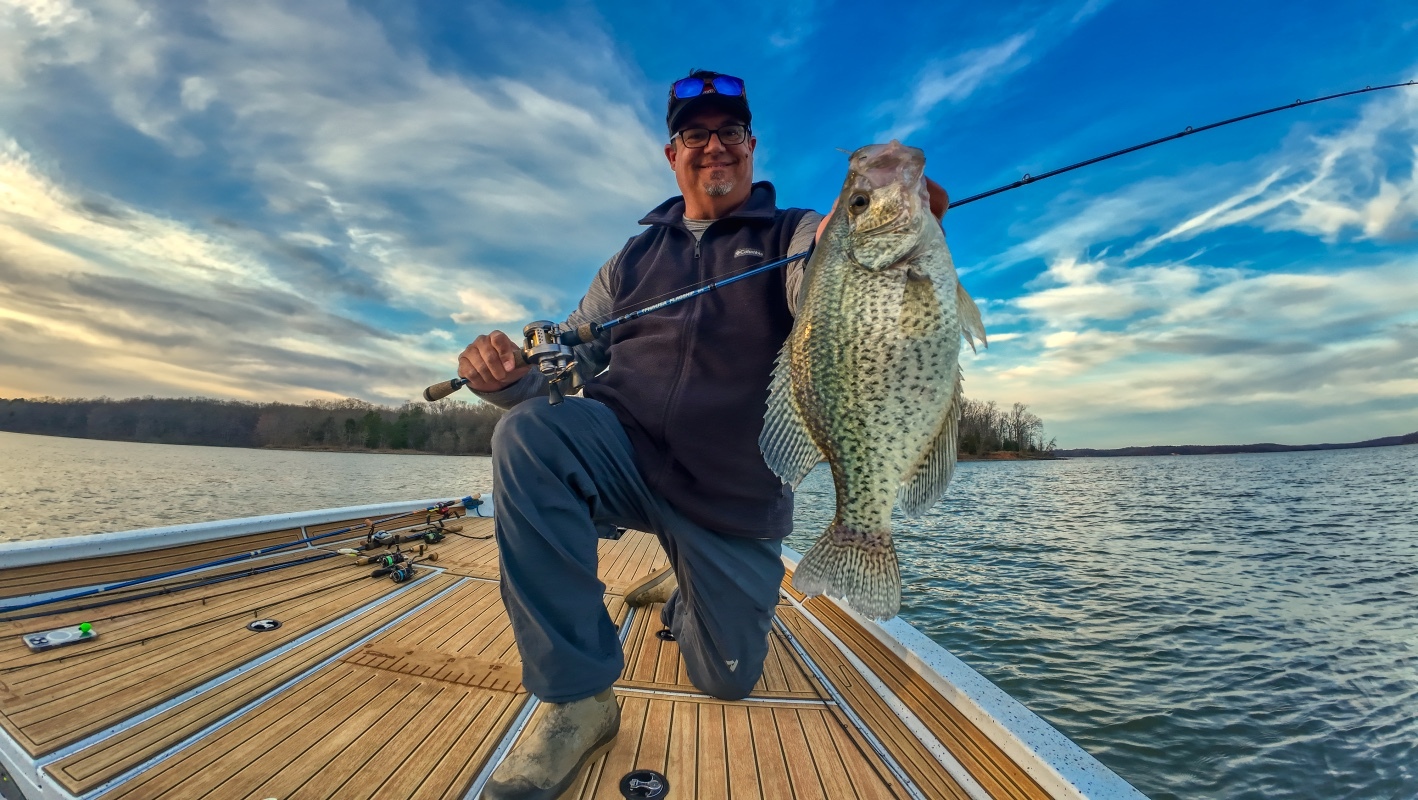
Best Fall Crappie Lures
Because fish are very active in the fall, especially when water temperatures are between 50-60 degrees, you will find crappie willing to chase and react to baits a lot better than they did in the summer months. So a wide variety of lures will work, even some you might not typically fish with.
Soft plastics on jigheads are the go-to lures in the fall. Curly tails, shad bodies, small swimbaits, and more will work to catch crappie in the fall. If you like to vertical jig with a long rod over brush and cover, a 1/8-ounce jighead with a little bit larger soft plastic works great. If you prefer to sit back and cast to schools in open water or to brush piles, a smaller plastic on a 1/16-ounce jighead is a good starting point.
Some preferred soft baits for crappie in the fall would include the following:
Curly Tails
- Z-Man Guppy Grubz
- Southern Pro Hot Grub
- Kalin's Triple Threat Grub
- Crappie Magnet Slab Curly
- Mister Twister Curly Tail
Shad Tails
Swimbaits
Larger Jig Bodies
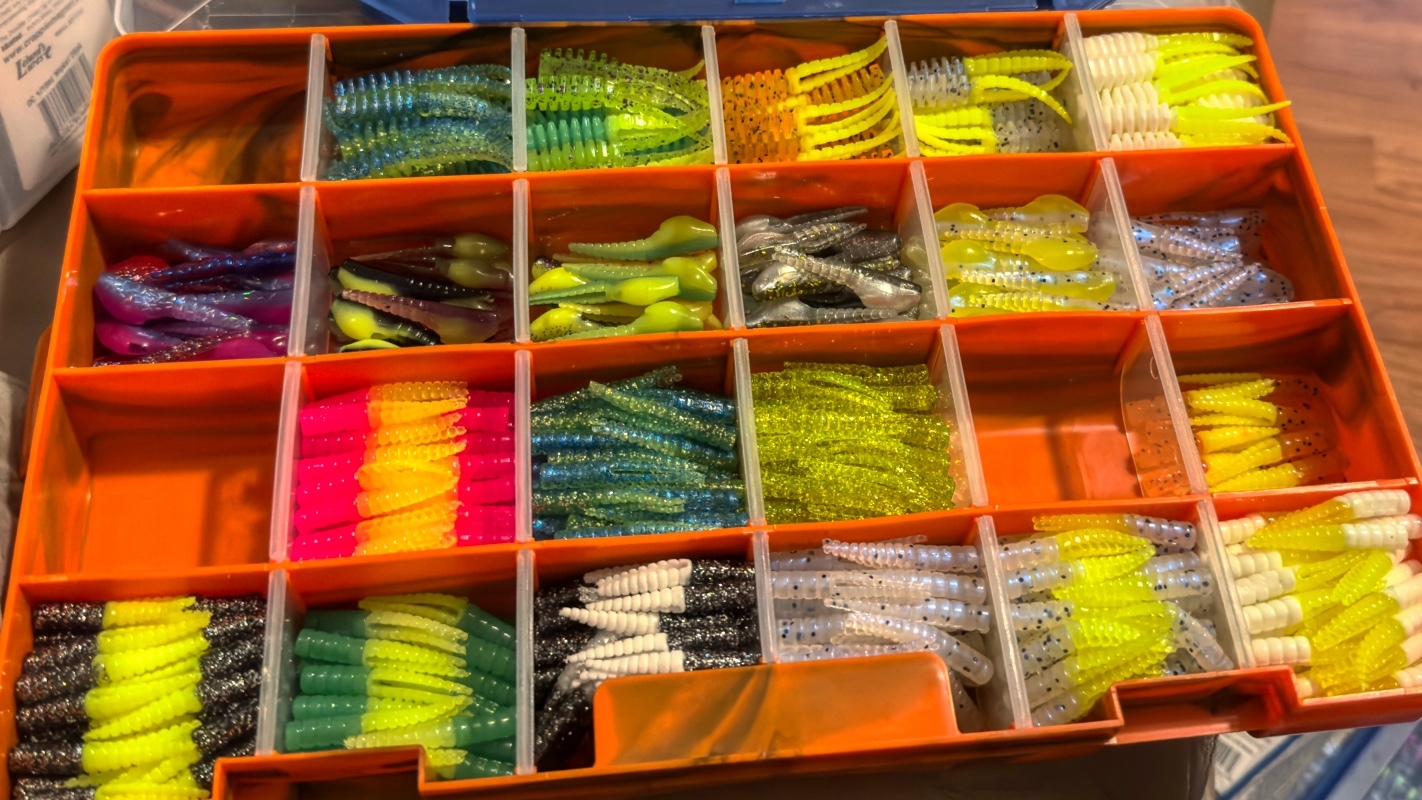
Where to Fish for Crappie in the Fall
When the waters cool in the fall and fish draw out of their deeper summer haunts and move into the bays, basins, and creek arms, Crappie will move to high spots with cover as well as unique places like docks, shady banks, and an often overlooked prime location—channel swing banks.
White crappie are very cover-oriented but can also be open water fish in muddier waters, where black crappie are much more structure-oriented and baitfish-oriented fish. So those two differences will help you identify areas to fish. Simply speaking, start at your mid-depth range, say 8-14 feet, fishing cover and high spots like humps, points, flats off creek channels, and then work your way shallower until you find fish.
In the fall, I often start on a channel swing bank or a high spot where the bottom gets shallower in a relatively small area and has some cover on it, like stumps, brush piles, stake beds, or docks. And I will start fishing through the area.
Brush Piles
Brush piles often produce the best they will all year in the fall. Anglers can often find a limit of crappie in a single brush pile in the fall. Crappie group up the most in the fall, relatively speaking, as they herd bait and forage before the coldest temps set in. And that can really put them in predictable places and make for some great fishing. Both casting and vertical jigging excel this time of year on brush piles.
Docks
Docks are not as often fished for crappie, but can hold a ton of black crappie, typically in the fall months. Look for the darkest, shadiest docks near deeper water. Shooting docks can be done by leaving about 2-3 feet of line out from the end of your rod. Next, grab your jighead by the bend in the hook to keep your fingers behind the hook point and pull the jig back to load the rod like a bow and arrow. Make sure your line from the tip to your fingers is parallel to the water and lower than the opening under the dock to prepare to shoot. Then simply let go of the jig, and then your finger holding the line on your open spinning reel a split second later.
It takes a bit to get the timing down. To get good at shooting, simply go out to open water and practice loading the rod, grabbing your jig, and letting go at the right times with both hands. A slight lift of the rod as the jig travels can help facilitate the flight of the jig under the dock.
Structure Changes
The last place I look for crappie in the fall is around structure changes like where a creek channel swings into and away from a bank. These swing banks will often have a lot of bait in the fall, and it's where I often find my biggest schools of crappie. Black crappie herd bait much like other gamefish and will often do this on channel swing banks. If these banks have cover, they can be even better, but I often find large schools of crappie just roaming on the swing banks looking for pods of bait. Once you find the crappie, it can be fast and furious fishing for sure.
As the water temperatures dip below 50 degrees, the crappie will move deeper to get set up on their winter locations, but there are usually still some crappie around mid-depth swings and brush well into December in the Midwest and southern states that don't have to worry with lakes icing up.
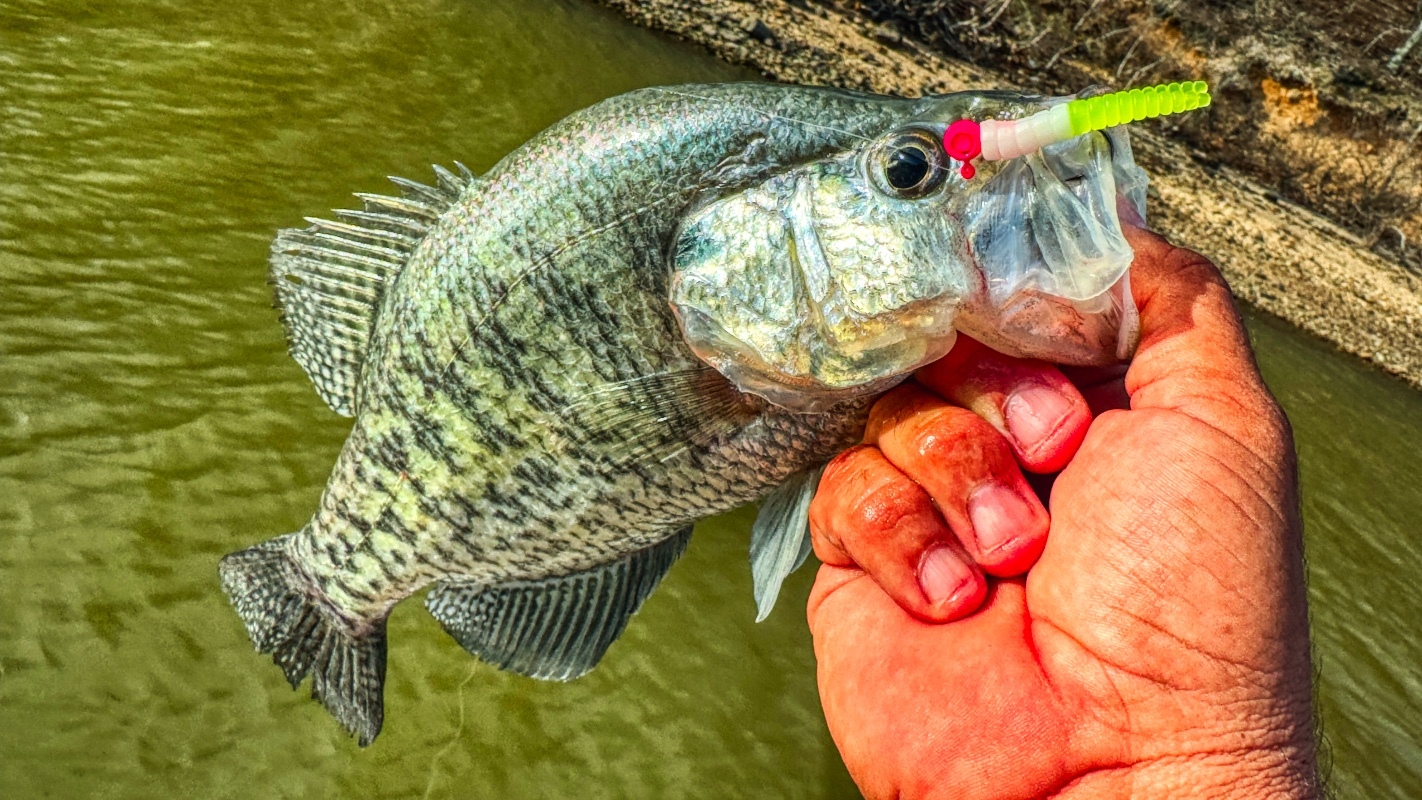
Fall Crappie Fishing Gear
Covering water is often the name of the game in the fall because you are hunting those groups, so you want to find brush piles or schools of fish related to baitfish and then cast to them and determine if you have a good group there. So I like to chunk and wind and move this time of year until I find a bunch of biting fish.
For that type of fishing, a Light to Medium Light spinning rod, 6 to 7 feet with 4-pound monofilament, is really hard to beat. Something like a FishUSA Flagship UL rod or a B'n'M Leland's TCB is perfect for chasing fall crappies. And if you prefer vertical jigging, a 10 to 14-foot rod is a good place to start. I personally like a B'n'M Diamond Jig Pole. But pick a brand you like and put some 10-pound braid with a fluoro leader on it, along with a 1/8-ounce jig, and go to work. There are a lot of good crappie rods out there now.
And if you like to really get fancy with it, check out a BFS combo for better line management and lure control. The FishUSA Flagship BFS rod is perfect for crappie jigging in the fall and is one of my go-to setups now.
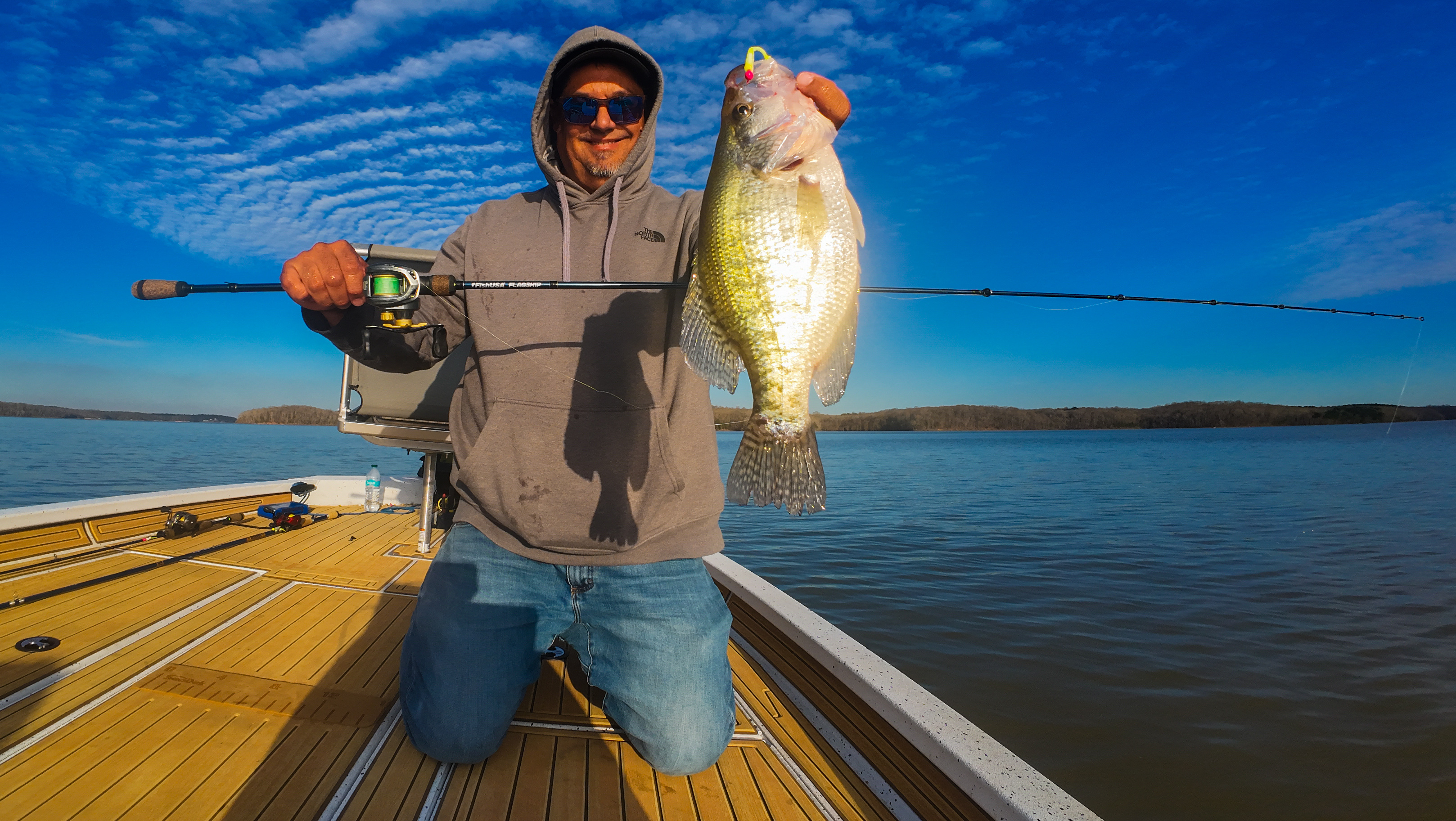
Shop Crappie Fishing Tackle & Gear

